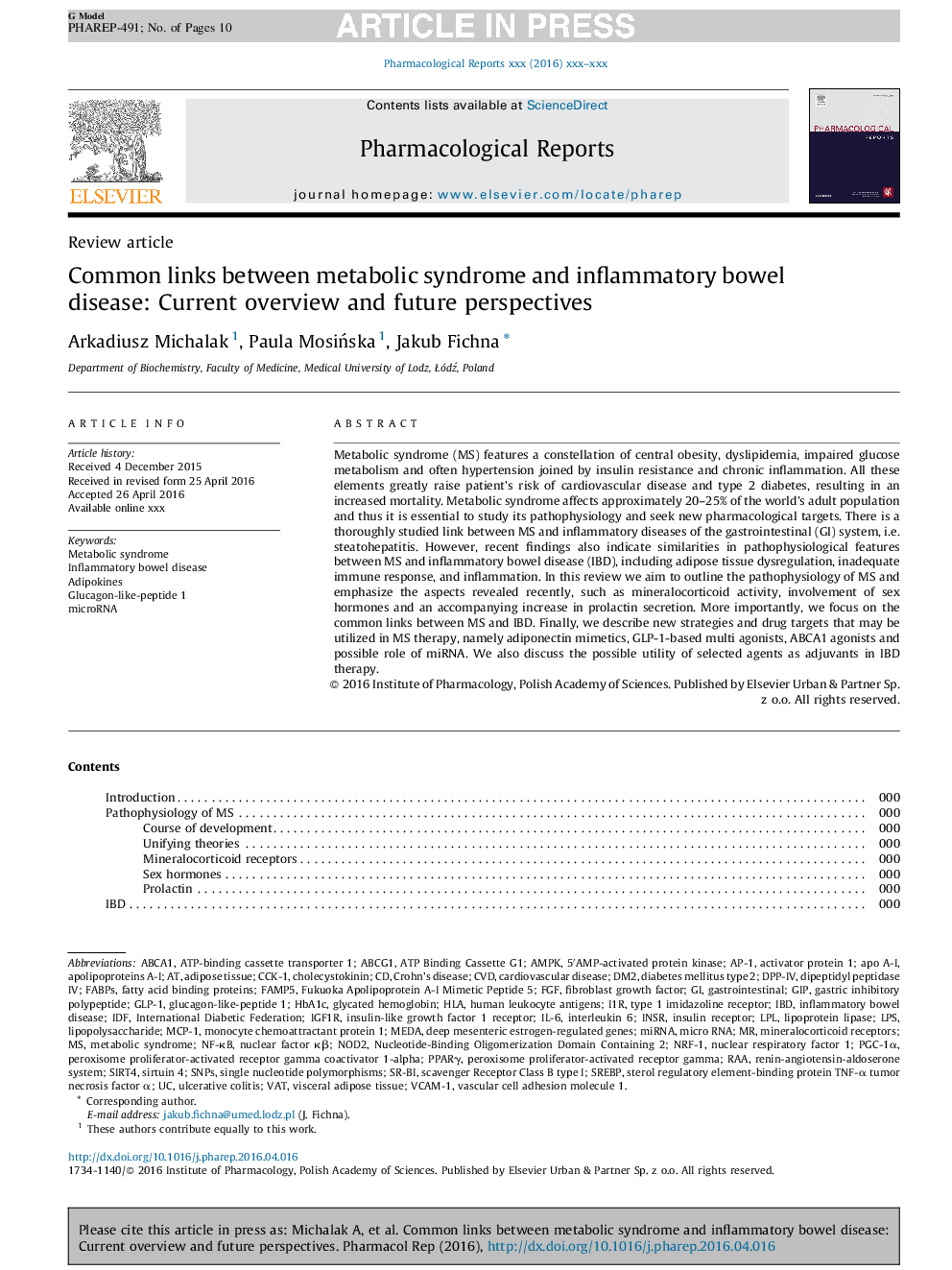| Article ID | Journal | Published Year | Pages | File Type |
|---|---|---|---|---|
| 2010451 | Pharmacological Reports | 2016 | 10 Pages |
Abstract
Metabolic syndrome (MS) features a constellation of central obesity, dyslipidemia, impaired glucose metabolism and often hypertension joined by insulin resistance and chronic inflammation. All these elements greatly raise patient's risk of cardiovascular disease and type 2 diabetes, resulting in an increased mortality. Metabolic syndrome affects approximately 20-25% of the world's adult population and thus it is essential to study its pathophysiology and seek new pharmacological targets. There is a thoroughly studied link between MS and inflammatory diseases of the gastrointestinal (GI) system, i.e. steatohepatitis. However, recent findings also indicate similarities in pathophysiological features between MS and inflammatory bowel disease (IBD), including adipose tissue dysregulation, inadequate immune response, and inflammation. In this review we aim to outline the pathophysiology of MS and emphasize the aspects revealed recently, such as mineralocorticoid activity, involvement of sex hormones and an accompanying increase in prolactin secretion. More importantly, we focus on the common links between MS and IBD. Finally, we describe new strategies and drug targets that may be utilized in MS therapy, namely adiponectin mimetics, GLP-1-based multi agonists, ABCA1 agonists and possible role of miRNA. We also discuss the possible utility of selected agents as adjuvants in IBD therapy.
Keywords
SREBPAP-1GLP-1IGF1RPGC-1αNRF-1AMPKHbA1cVCAM-1RAALPLNOD2SR-BIGIPDM2ABCG1ATP-binding cassette transporter 1Apo A-Inucleotide-binding oligomerization domain containing 2INSRSIRT4MedAI1RFABPsnuclear factor κβIBDSNPsABCA1LPSFGFMCP-1IDFPPARγIL-6DPP-IVNF-κBperoxisome proliferator-activated receptor gamma coactivator 1-alpha5′AMP-activated protein kinasemicro RNAAdipokineshuman leukocyte antigensHLAinterleukin 6Adipose tissuevisceral adipose tissuecardiovascular diseaseCrohn's diseaseInflammatory bowel diseaseGastrointestinalDiabetes mellitus type 2dipeptidyl peptidase IVCVDMetabolic syndromeNuclear respiratory factor 1fibroblast growth factorLipoprotein lipaselipopolysaccharideVATVascular cell adhesion molecule 1MicroRNAMiRNAGlycated hemoglobingastric inhibitory polypeptidemonocyte chemoattractant protein 1activator protein 1Fatty acid binding proteinsSingle nucleotide polymorphismscholecystokininUlcerative colitisPeroxisome proliferator-activated receptor gammainsulin receptorinsulin-like growth factor 1 receptorMineralocorticoid receptorsscavenger receptor class B type I
Related Topics
Life Sciences
Biochemistry, Genetics and Molecular Biology
Biochemistry
Authors
Arkadiusz Michalak, Paula MosiÅska, Jakub Fichna,
